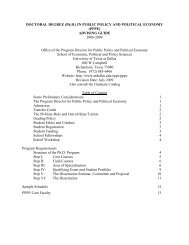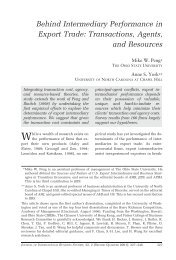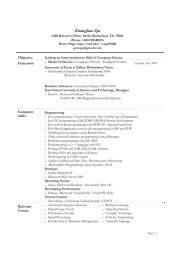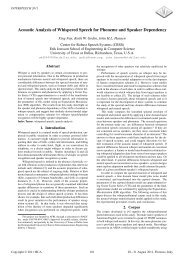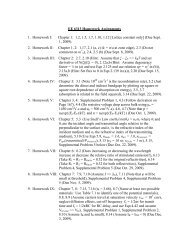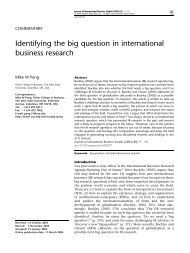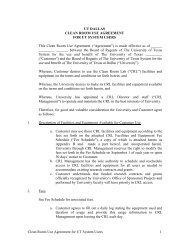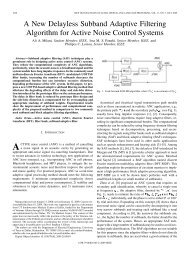SOLUTION FOR HOMEWORK 3, STAT 4352 Welcome to your third ...
SOLUTION FOR HOMEWORK 3, STAT 4352 Welcome to your third ...
SOLUTION FOR HOMEWORK 3, STAT 4352 Welcome to your third ...
You also want an ePaper? Increase the reach of your titles
YUMPU automatically turns print PDFs into web optimized ePapers that Google loves.
Remark: We need <strong>to</strong> check that n −1 n i=1 X 2 i − ¯ X 2 ≥ 0 for the estima<strong>to</strong>r <strong>to</strong> be well<br />
defined. This may be done via famous Hölder inequality<br />
m<br />
( aj)<br />
j=1<br />
2 m<br />
≤ m a<br />
j=1<br />
2 j .<br />
4. Problem 10.59. Here X1, . . ., Xn are Poisson(λ), λ ∈ Ω = (0, ∞). Recall that<br />
Eλ(X) = λ and V arλ(X) = λ. Then, by definition of the MLE:<br />
ˆλMLE := arg max<br />
λ∈Ω<br />
= arg max<br />
λ∈Ω<br />
n<br />
l=1<br />
n<br />
l=1<br />
For the Poisson pdf fλ(x) = e −λ λ x /x! we get<br />
ln LXn(λ) = −nλ +<br />
fλ(Xl) =: arg max LXn(λ) λ∈Ω<br />
ln(fλ(Xl)) =: arg max ln LXn(λ). λ∈Ω<br />
n<br />
n<br />
Xl ln(λ) − ln(Xl!).<br />
l=1<br />
l=1<br />
Now we need <strong>to</strong> find ˆ λMLE at which the above loglikelihood attains its maximum over all<br />
λ ∈ Ω. You can do this in a usual way: take derivative with respect <strong>to</strong> λ ( that is, calculate<br />
∂ lnLX n(λ)/∂λ, then equate it <strong>to</strong> zero, solve with respect <strong>to</strong> λ, and then check that the<br />
solution indeed maximizes the loglikelihood). Here equating of the derivative <strong>to</strong> zero yields<br />
−n + n l=1 Xl/λ = 0, and we get<br />
ˆλMLE = ¯ X.<br />
Note that for the Poisson setting the MME and MLE coincide; in general they may be<br />
different.<br />
5. Problem 10.62. Here X1, . . .,Xn are iid N(µ, σ 2 ) with the mean µ being known and<br />
the parameter of interest being the variance σ 2 . Note that σ 2 ∈ Ω = (0, ∞). Then we are<br />
interested in the MLE. Write:<br />
Here<br />
ˆσ 2 MLE<br />
= arg max<br />
σ 2 ∈Ω ln LX n(σ2 ).<br />
ln LXx(σ2 n<br />
) = ln([2πσ<br />
l=1<br />
2 ] −1/2 e −(Xl−µ) 2 /(2σ2 n<br />
) 2 2<br />
) = −(n/2) ln(2πσ ) − (1/2σ ) (Xl − µ)<br />
l=1<br />
2 .<br />
This expression takes on its maximum at<br />
Note that this is also the MME.<br />
ˆσ 2 MLE = n−1 n <br />
(Xl − µ) 2 .<br />
l=1<br />
3



